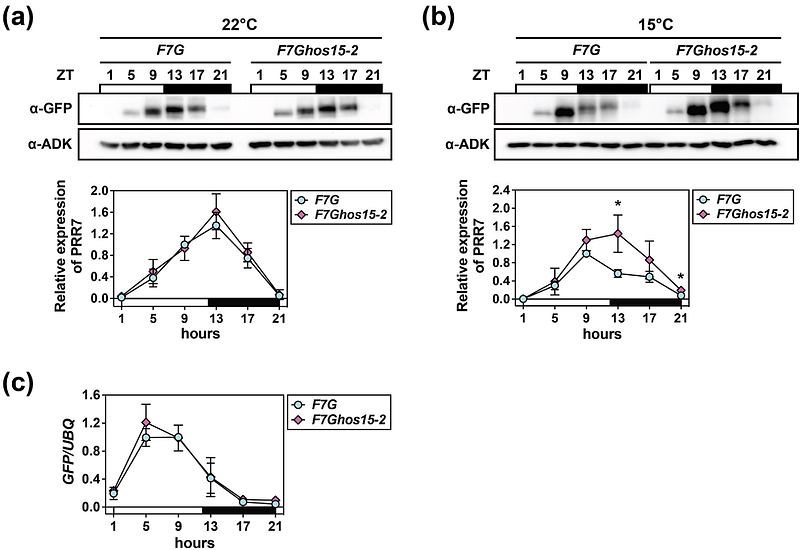HOS15-mediated turnover of PRR7 enhances freezing tolerance

HOS15-mediated turnover of PRR7 enhances freezing tolerance
Kim, Y. J.; Kim, W. Y.; Somers, D. E.
AbstractArabidopsis PSEUDO RESPONSE REGULATOR7 (PRR7) is a core component of the circadian oscillator which also plays a crucial role in freezing tolerance. PRR7 undergoes proteasome-dependent degradation to discretely phase maximal expression in early evening. While its transcriptional repressive activity on downstream genes is integral to cold regulation, the mechanism of the conditional regulation of the PRR7 protein activity is unknown. We used double mutant analysis, protein interaction and ubiquitylation assays to establish that the ubiquitin ligase adaptor, HIGH EXPRESSION OF OSMOTICALLY RESPONSIVE GENE 15 (HOS15), controls the protein accumulation pattern of PRR7 through direct protein-protein interactions. Freezing tolerance and electrolyte leakage assays show that PRR7 enhances cold temperature sensitivity, supported by ChIP-qPCR at C-REPEAT BINDING FACTOR (CBF) and COLD REGULATED 15A (COR15A) promoters where PRR7 levels were higher in hos15 mutants. We establish that HOS15 mediates PRR7 protein turnover through enhanced ubiquitylation at low temperature in the dark. Under the same conditions, increased PRR7 association with the promoter regions of CBFs and COR15A in hos15 correlates with decreased in CBF1 and COR15A transcription and enhanced freezing sensitivity. We propose a novel mechanism whereby HOS15-mediated regulation of PRR7 provides an intersection between the circadian system and other cold acclimation pathways leading to freezing tolerance through upregulation of CBF1 and COR15a.


